Dforce, or how to make dresses look good.
(repost from last month's patreon/subscribestar blogpost)
Hi all, it's been a little while since I did a behind the scenes, and today, it's about how to make dresses look good, among other things.
So, how does clothing actually work when you create images in DAZ3d, as I do for Light of my Life?
There's actually two mechanisms. For most of the clothes that follow the shape of a body closely, like a T-shirt, or some tight jeans, socks, shoes, or even a short, tight skirt, it uses a system called 'conforming' that simply tries to make the item of clothing follow the contours of the body of your model.
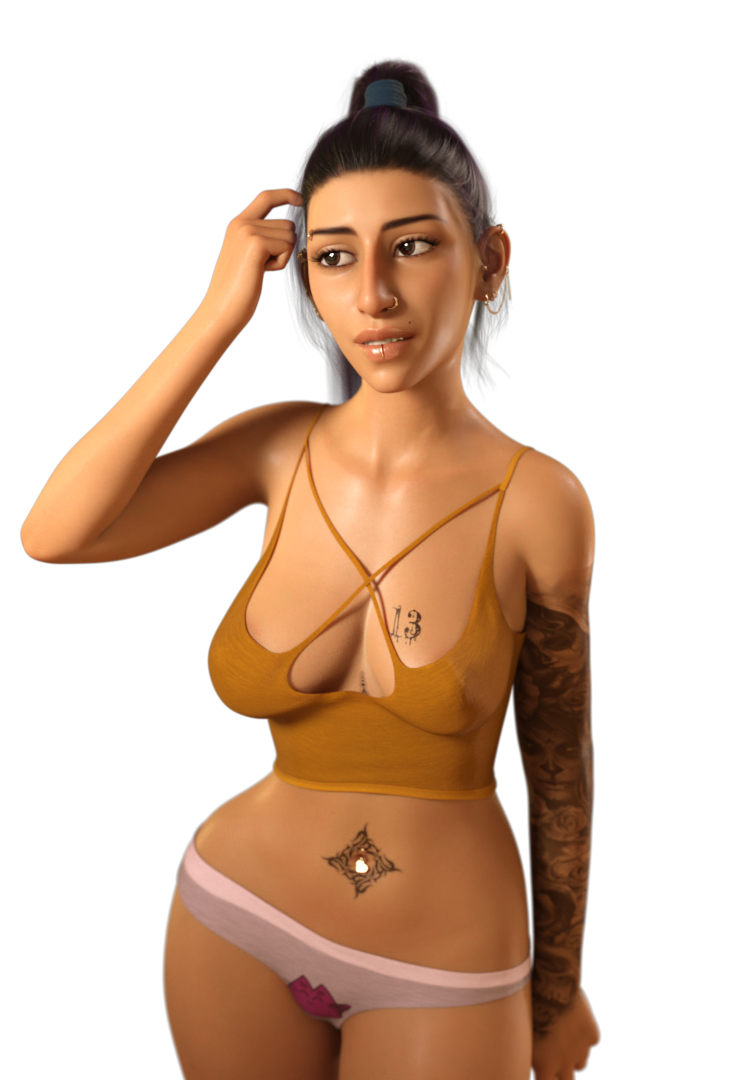
It's nice and simple, and it works really fast. Just fit some clothes to the model, maybe tweak some sliders a little where it's a little to right around a waist, shoulder, or bosom to fix clipping issues, and you're done.
And while that's nice and neat, you can't just keep your models in tight outfits all the time. Or maybe you can, I guess it depends of what you're making. But if you do, you're confining yourself to a very limited subset of the available outfits and accessories.
In fact, I find that some of the nicest looking items of clothing and most spectacular outfits have at least a few loose fitting elements that hang from your model's figure, drape on the floor or over the chair they're sitting on, and interact in other ways with the environment, in a way that goes beyond what you can achieve with the simple conform-to-the-body mechanism of tighter clothes and a few posing morphs.
In comes dforce. At it's heart, it's a physics simulator that can do a lot of different things, but mostly, it is used makes cloth behave like cloth. Or hair like hair. You can see that in the image below, from the Court of the Red Queens wallpaper (not canon).
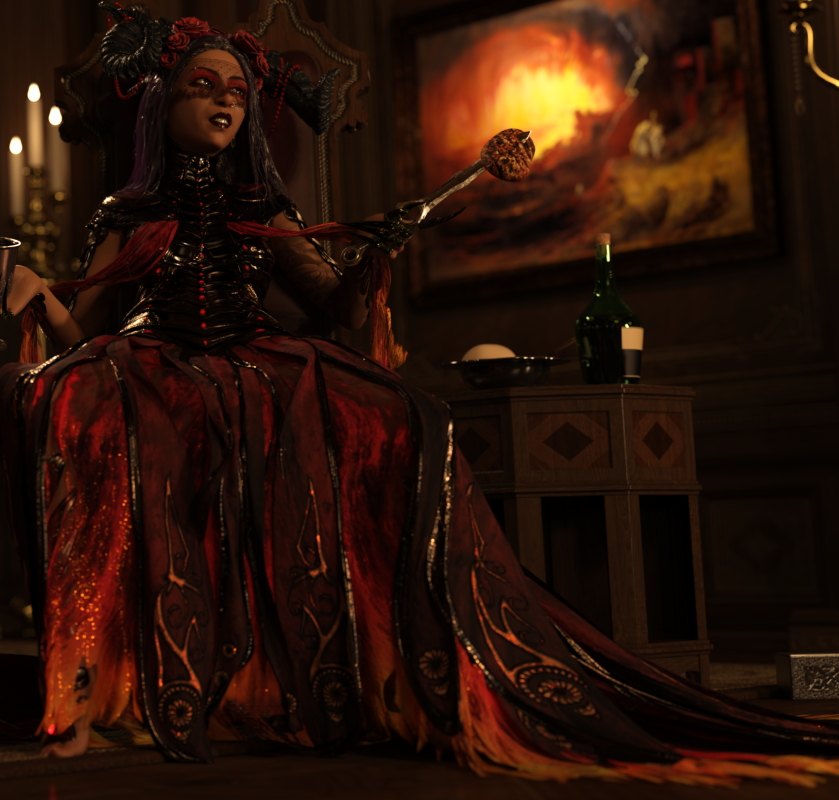
Note the way the dress drapes on the floor, with an inner skirt of softer fabric and an outer skirt of more rigid panels that almost act like rawhide. Or the way the dress looks natural hanging over Macy's knees, without stretching the polygon mesh, and screwing up the textures and shapes, like a conforming piece of clothing would.
Or notice Denise's hair draped over the shoulder and the arm in this detail from that same wallpaper.
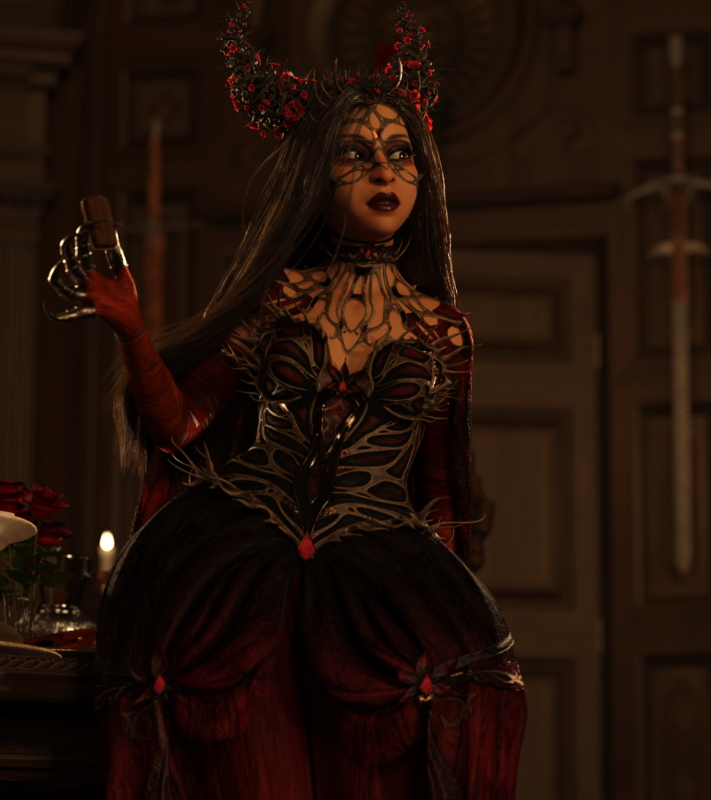
But all that wonderful draping and folding and billowing and crumpling comes at a cost. This, for instance, is what that dress looks like when you first load it up.
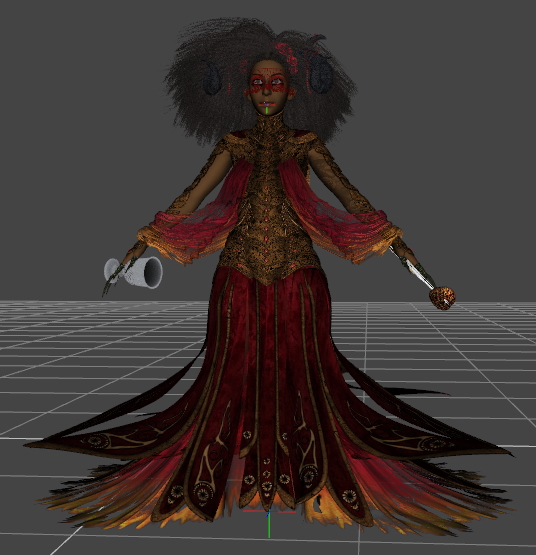
It looks weird and formless, and rigid bits and pieces are poking out left and right. If you just pose the character on a chair, most of it would poke through the floor, furniture, and possibly the character itself, depending on the pose.
And it's not just a matter of pressing a “run simulation” button to get it to look like it does in the final wallpaper either. Because the bits that poke through a bit of furniture would get stuck inside there when the simulation starts. And when it has run its course, it'd look like random bits of the outfit were stapled to the chair and floor, stuck inside.
So the trick is to make the character land on whatever the bit of clothing or hair is going to be interacting with, be it a seat, the floor or another character.
It's not easy to show that with this wallpaper image, as there's actually several separate dforce runs needed for each character to handle different layers of the clothing and hair to get everything in place. So instead, lets take another example, from the game this time, where Denise is sitting on the hood of the car having an ice cream.

The dress, when initially loaded, looks just as weird and ungainly as the dress from the other example, standing out to the sides like a tent.

In this case, when we run the simulation (with all the other items of clothing, accessories, and hair, hidden to prevent the dress getting caught on them and acting weird, you can see I have the character positioned a little but up and away from the car.
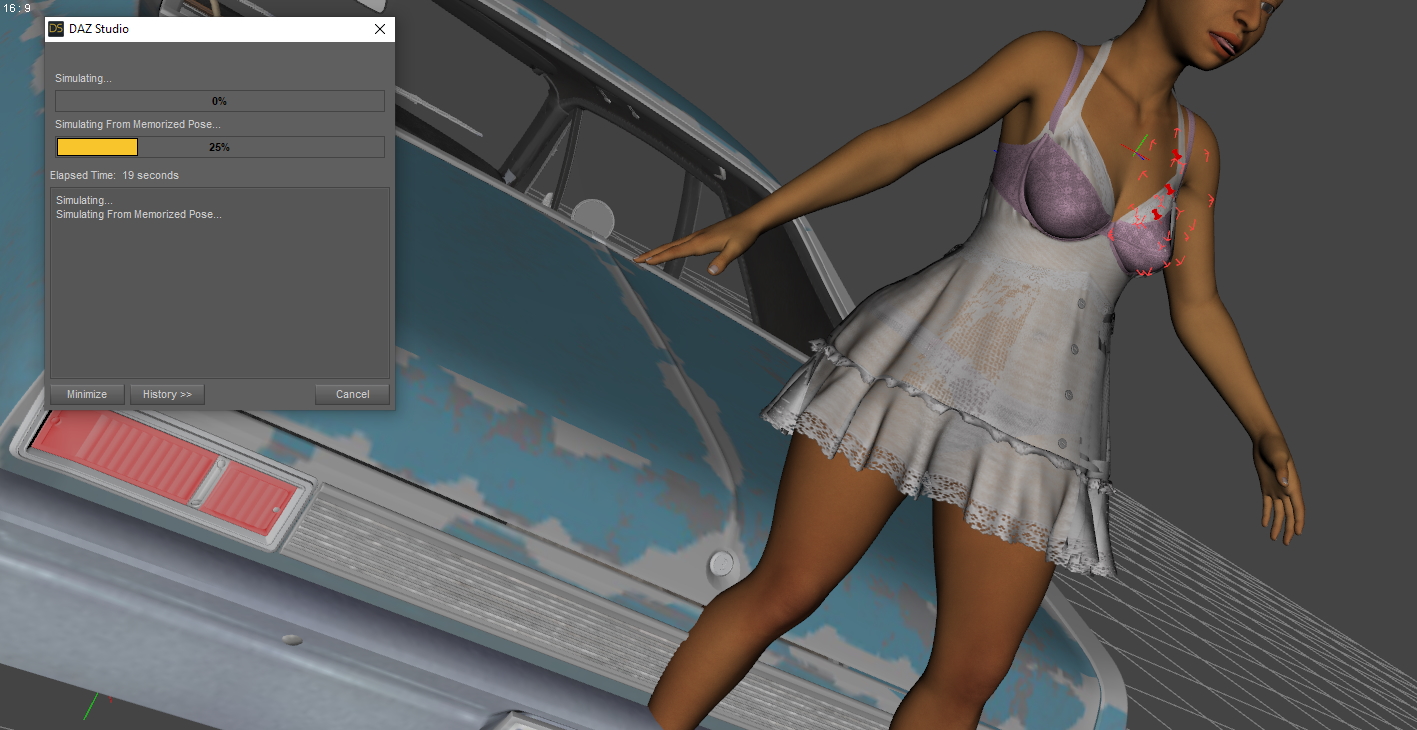
Then, as the simulation runs, she'll move into position as she assumes the assigned pose, and the dress follows quite nicely, adjusting to the pull of gravity and draping onto the hood of the car and over her legs in a natural way.
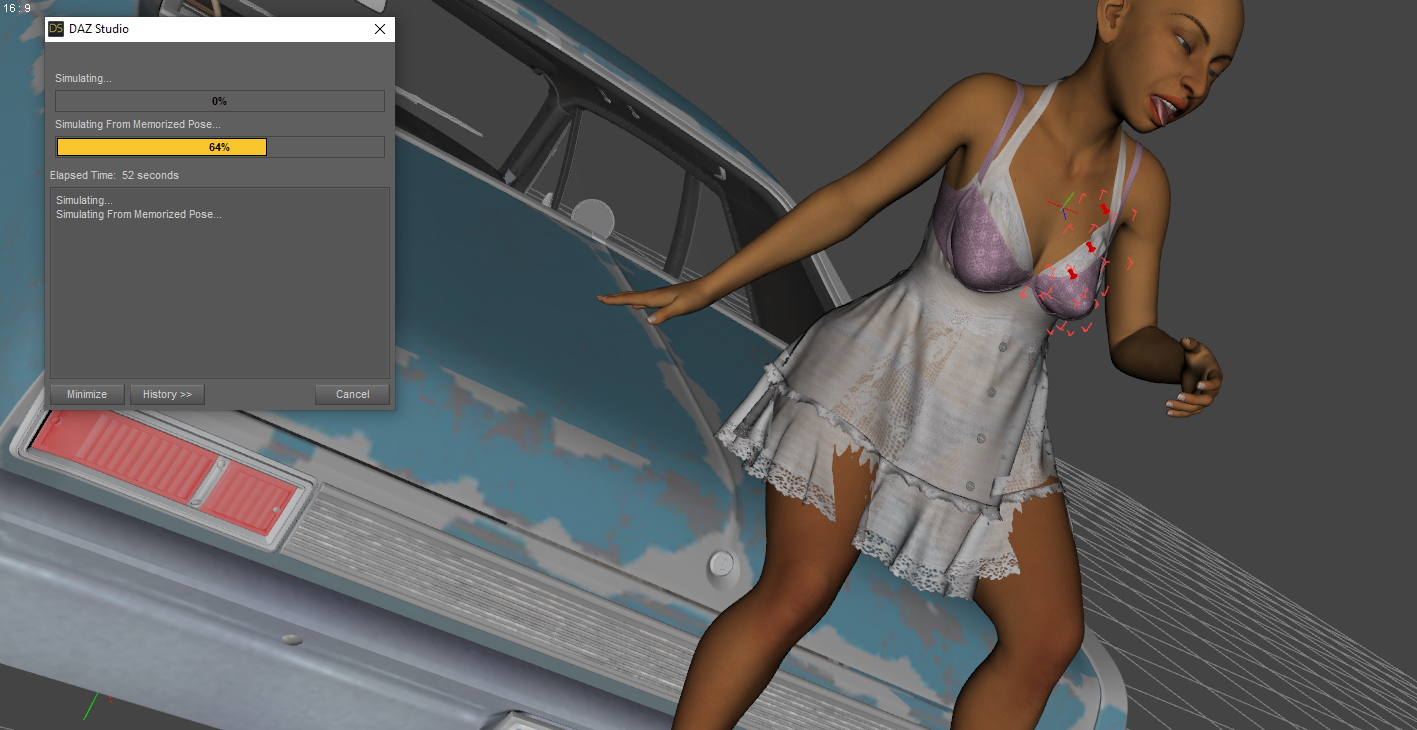
As you can see, using dforce can help greatly in making a piece of clothing or hair look nice and natural while interacting with other objects.
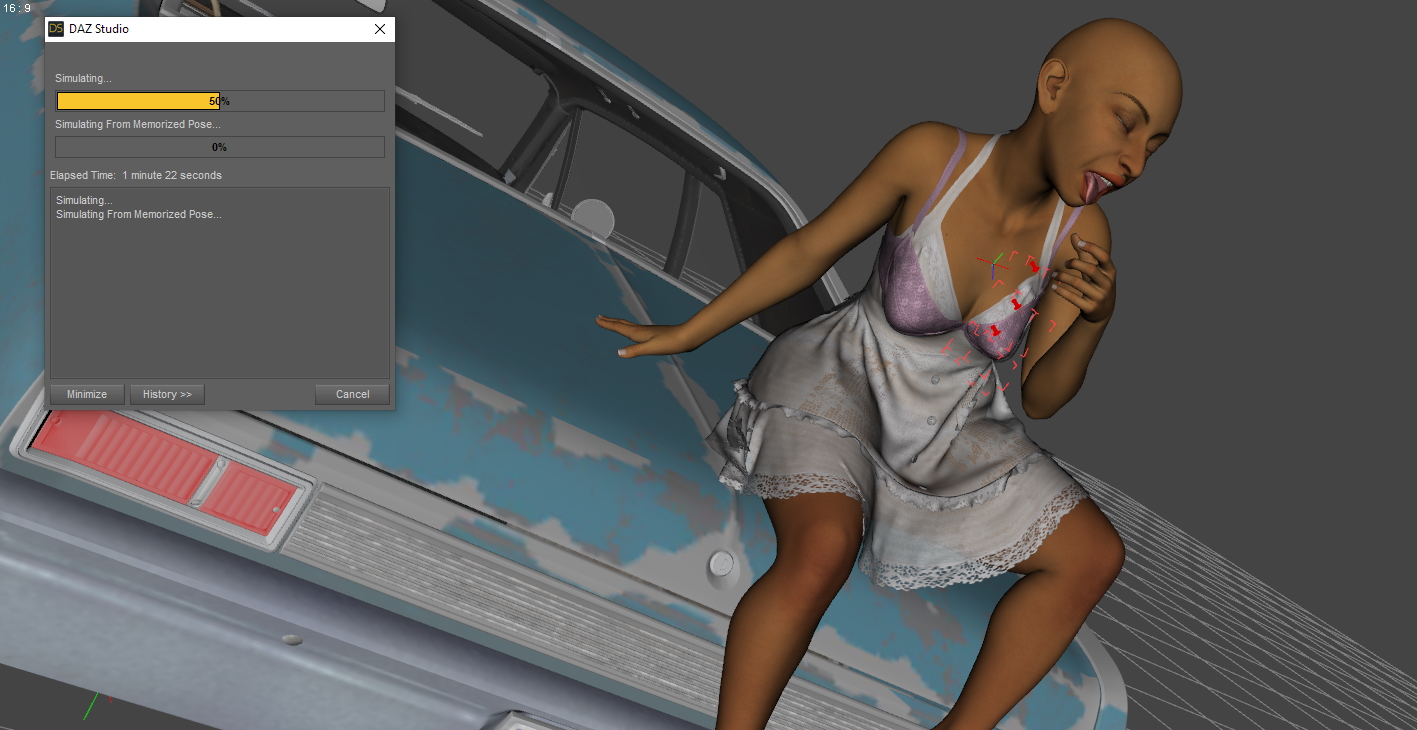
But there's a cost. The system is finicky and prone to weird issues, like exploding geometry, bits of the clothing getting stuck on items, or a limb, and there's the occasional crash as the simulation flies off into infinity and beyond.
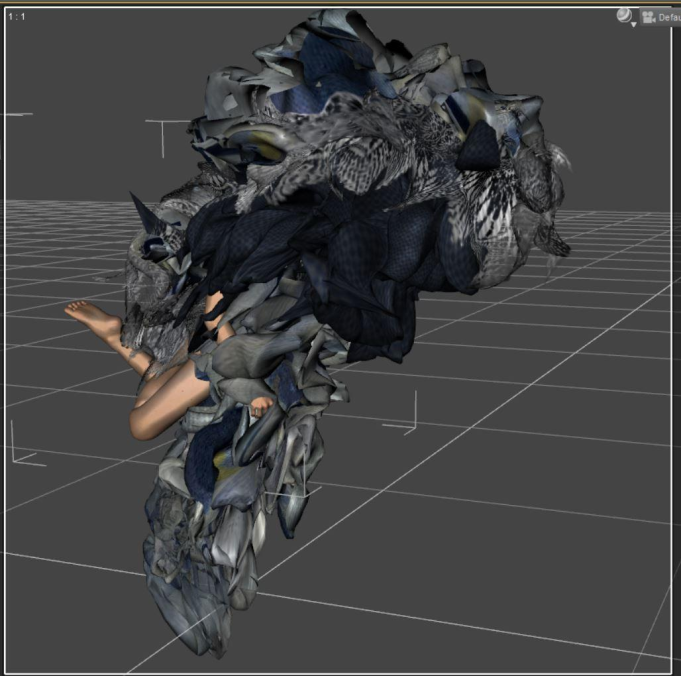
And even if it is behaving in the way it should, there's a steep learning curve to figuring out the ins and outs of it. And then, when all is done, setting up the images and running the simulations takes up quite a bit of time as well.
That is why you can often see creators trying to do as little as possible with it. Sometimes just by keeping the character standing well away from everything, avoiding poses or interactions with objects, the floor or other characters that might require extra effort to get the simulation to run right and the result to look natural. (1)
Or perhaps they avoid using the system all together, by keeping the interacting parts out of frame or only using conforming clothes (everyone is wearing t-shirts and hotpants!), or just going with a skirt that looks like the character is wearing a cardboard tube and hoping no-one will notice. And if your goal is to churn out several images per hour, that is quite understandable.
But is is a shame I feel, as the results can either look spectacular, or just natural in such a way that you don't even consider the effort that is put in, but it just feels right, which is perhaps the best application of all.
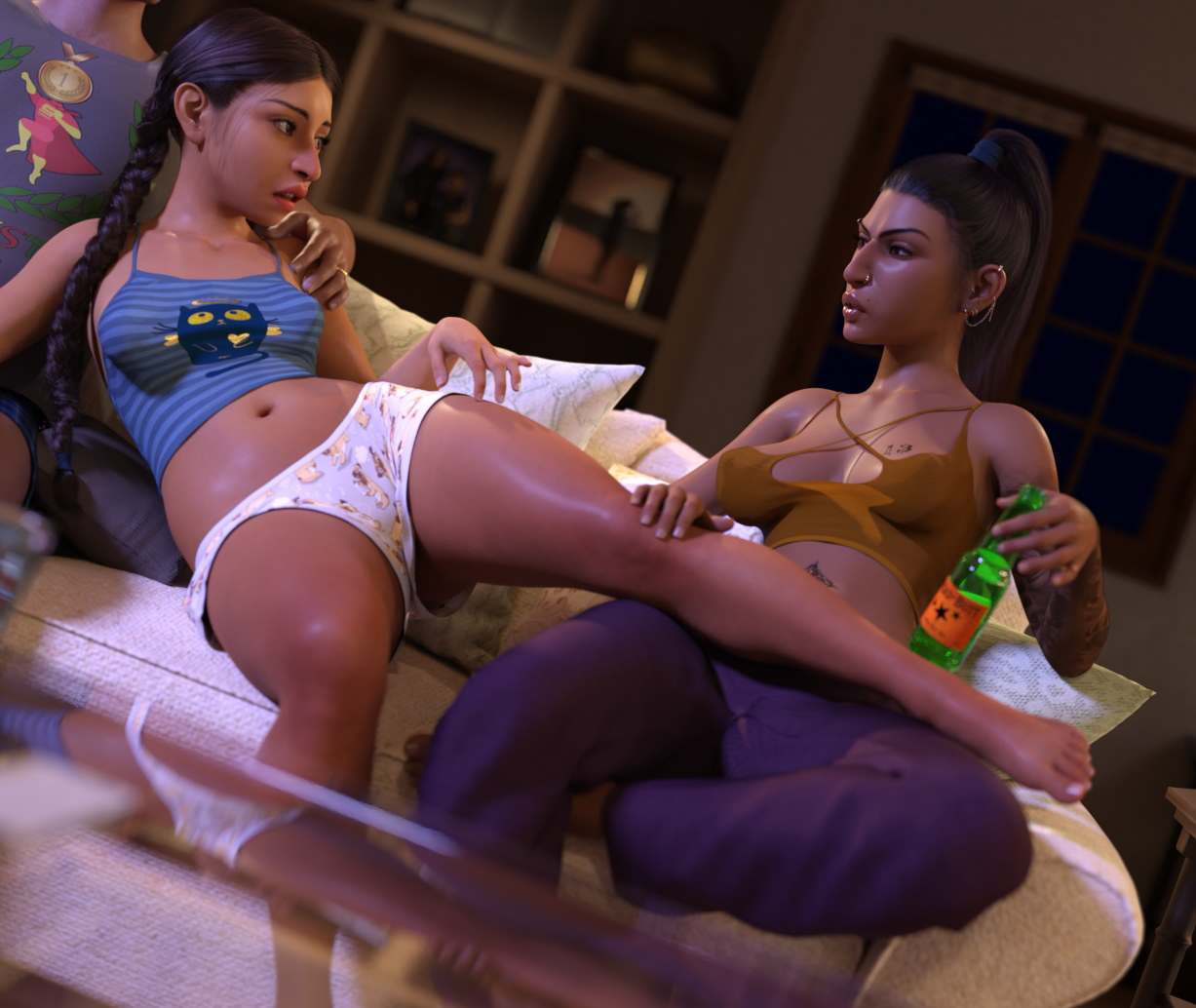
That's it, hope you enjoyed this little behind the scenes look.
Make sure to join us on Discord for the latest progress updates.
(1) On a bit of a tangent, this keeping the character away from the action is something you will see quite a lot of in visual novels, even if dforce isn't involved at all. It is very little effort to just load up a character and apply a generic pose, and then position them in an the middle of some standard set. It it is, however, quite a lot of effort to have them interact with the set (that you probably customized for that purpose) or, even worse, with other characters. This is because you have to tweak and manipulate the character's pose until the interaction looks right and natural, and that can take up quite a bit of time. For that reason, some production groups will even force their writers to avoid situations where interactions with other characters or with objects cannot be handled by some standard pose or animation.
Get Light of my Life - Season 1
Light of my Life - Season 1
An adult visual novel about loss and love.
| Status | Released |
| Author | Naughty Road |
| Genre | Visual Novel |
| Tags | Adult, Erotic, Funny, Meaningful Choices, Narrative, Ren'Py, Romance, Singleplayer, Story Rich |
| Languages | English |
| Accessibility | Subtitles |
More posts
- Version 1.0.2 minor bugfixesJan 19, 2025
- Chapter 8 is out now!Dec 20, 2024
- Chapter 1-7 Service release version 1.0.1Dec 01, 2024
- Final update for Light of my Life Chapter 1-7Sep 17, 2023
- Light of my Life update 0.7.4Aug 31, 2023
- Light of my Life Chapter 7 Update 0.7.3Aug 19, 2023
- Update 0.7.2 for AndroidAug 16, 2023
- Chapter 7 update 0.7.1Aug 13, 2023
- Light of my Life Chapter 7 is out nowAug 11, 2023
- We need to talk about save game practices.Aug 06, 2023
